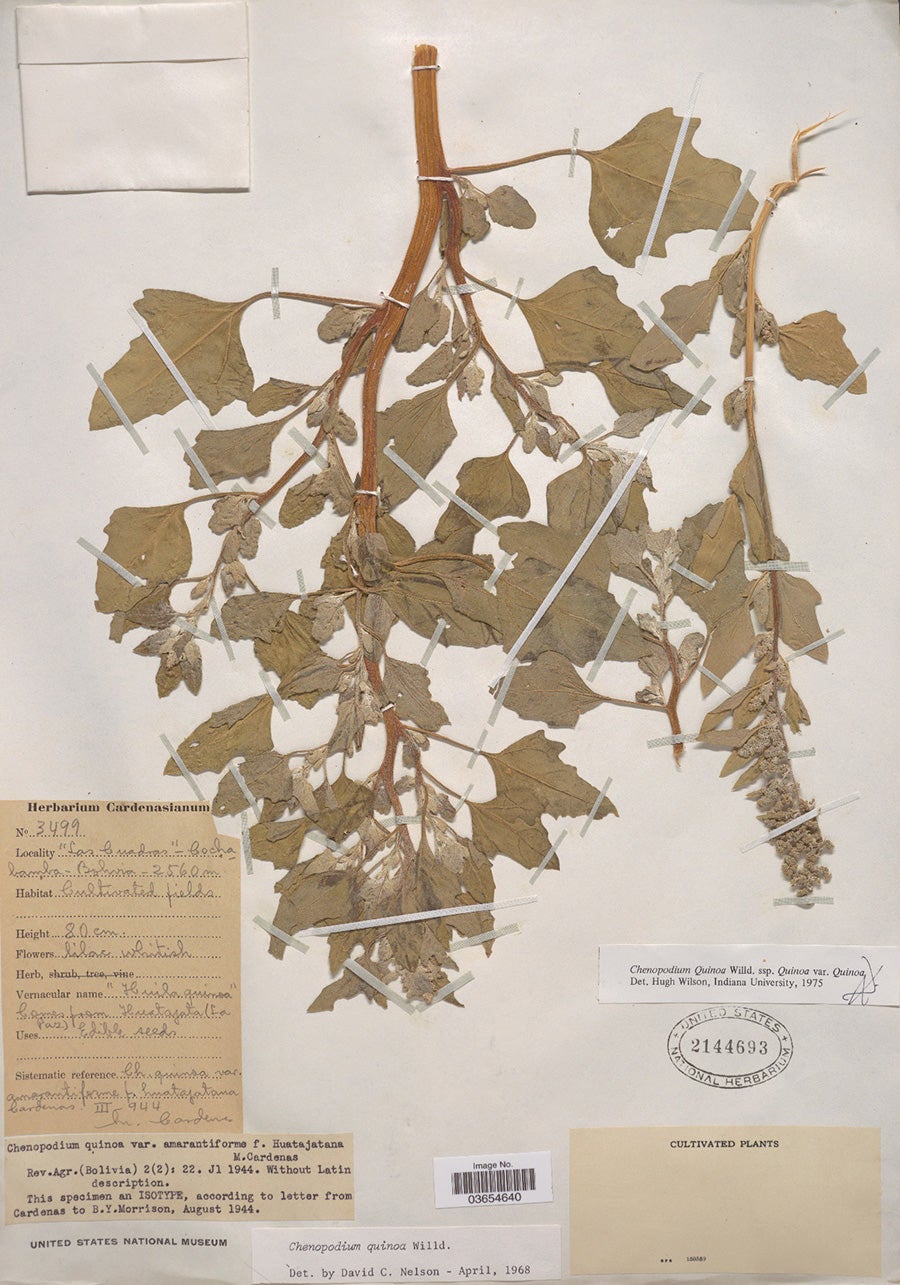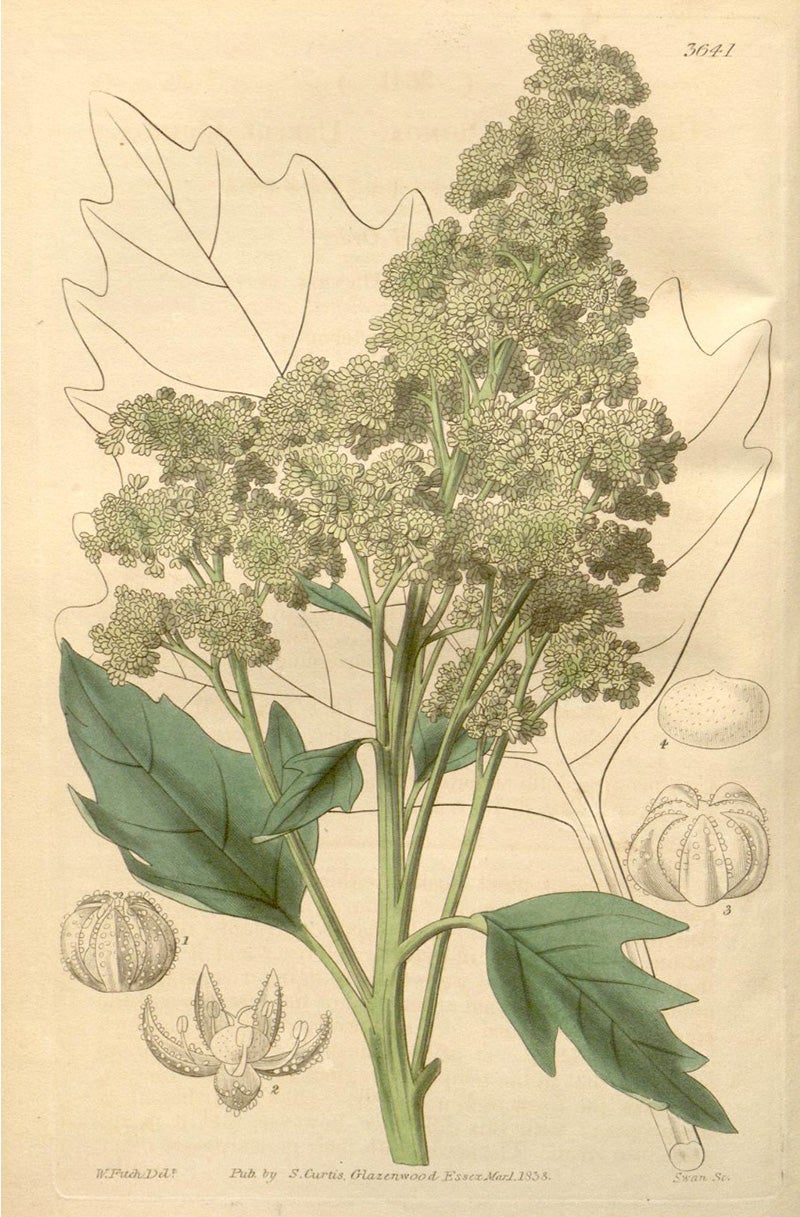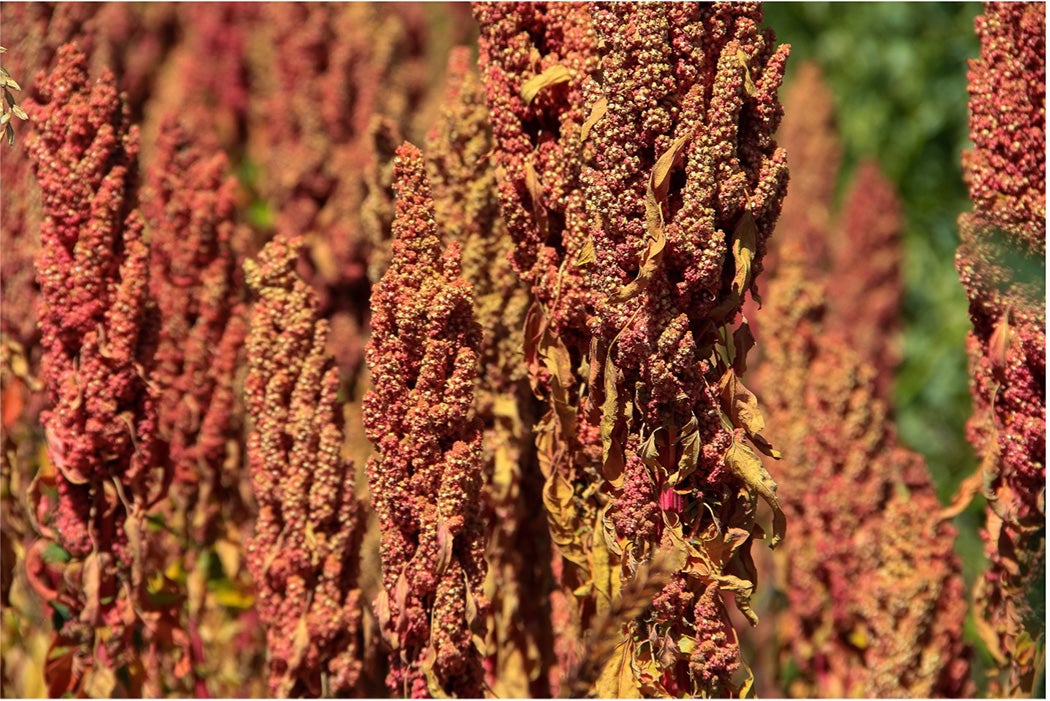Quinoa: Rise of an Andean Superfood
Once considered a minor crop for Indigenous communities, quinoa’s journey to worldwide stardom was centuries in the making.
The post Quinoa: Rise of an Andean Superfood appeared first on JSTOR Daily.
This year marks the tenth anniversary of the International Year of Quinoa (IYQ), a celebratory initiative created by the Food and Agricultural Organization of the United Nations. At the inaugural 2013 IYQ, Evo Morales, then president of Bolivia, proclaimed that quinoa was “an ancestral gift from the Andes to the world.” The IYQ capitalized on the growing international interest in this Indigenous “superfood” to promote quinoa as a nutrient-dense, sustainable, and culturally rich alternative to common Western grains.
The Secretary General of the UN hoped that quinoa’s excellent environmental adaptability would enable farmers in places such as Kenya, India, and and Europe to start growing the indigenous Andean grain. Promoters, first agricultural scientists and then government officials and corporate marketers, transformed the reputation of quinoa into a “miracle food” that could solve intractable problems like global malnutrition and crop failure. But as excited as world leaders were about giving quinoa a global platform, they were simultaneously aware of the potential downsides. The Secretary General voiced concerns that increased demand for the “superfood” might drive up prices and make it inaccessible to the Andean communities who stewarded quinoa for centuries.
In the years following the IYQ, a surge in media coverage of quinoa both championed the rapid growth in popularity and questioned the ethical and long-term economic impacts of quinoa’s rise. Experts are still debating the social and environmental impact of the boom, but the economic harms are clear. While quinoa remains expensive on American grocery store shelves, anthropologist Emma McDonell argues that the boom has gone bust. Profits have shrunk dramatically for Andean farmers since their peak in 2014.

It’s clear that quinoa’s international fame has reached unprecedented heights, but its cultural history reveals this comes from only the most recent attempt to turn the crop into a global alternative grain. Quinoa (Chenopodium quinoa) was first domesticated thousands of years ago in regions that today are part of Peru and Bolivia. It’s in the goosefoot family, so-called because of the three-pointed leaves typical of Chenopodium species that resemble the webbed foot of a goose. Many Chenopodium species are considered weeds, but quinoa is one of a few Chenopodium species widely cultivated today. Early descriptions of quinoa had to remind American and European readers that it wasn’t an unwanted weed but, in fact, grew readily in gardens or small plots.
An 1839 article in Curtis’s Botanical Magazine, a popular plant magazine founded by William Curtis in 1797, admitted that quinoa boasted “neither beautiful forms nor gaudy colors” but should be of interest to its readers because it was peculiar: it was “as unattractive in external aspect as are the Oraches and the Goosefoot of the road-sides and waste places of our country” yet served as “the chief nourishment of the people” of South America. In other words, quinoa appeared to be as unwanted as common weeds but actually had hidden nutritional value on the same level as European staple crops.

Indigenous communities had a much different relationship to quinoa. Growing up to six feet tall, quinoa was an important source of protein to Quechua- and Aymara-speaking communities long before the Inca Empire (c. 1438–1572). Ancient Andeans domesticated quinoa thanks to a mutualistic relationship between humans, plants, and herd animals. Wild quinoa seeds in the droppings of llamas and alpacas sprouted near villages and human communities. This arrangement increased the density of wild quinoa in nearby fields that eventually led to human-directed, sustained cultivation.
Domestication also spread quinoa cultivation as far north as Ecuador and as far south as Chile. Quinoa complemented potatoes, the staple crop of Andean diets, and other Andean food plants, such as oca, cañihua (Chenopodium pallidicaule), and kiwicha. Quinoa has been used in traditional medicine to treat various injuries and illnesses. In one notable use, the ash from quinoa and cañihua were central to the folk medicine of coca chewing. Despite these medicinal and culinary uses, however, Spanish colonizers disparaged quinoa as “Indian food” and forced Indigenous farmers to incorporate European crops such as wheat and barley into their farming systems. These new crops led to reduced farming of quinoa and other minor crops.
Though European plants undercut quinoa consumption in the Andes, Western promoters since the nineteenth century saw quinoa as an alternative grain in their diets. Traditional Andean recipes for quinoa commonly used it in soups, for porridge, or in a fermented beverage known as chicha de quinua. You might eat it today in salads, breakfast cereal bars, or veggie burgers. Quinoa’s appearance as an alternative grain in the late nineteenth and early twentieth century, however, was much different than today’s usage. In the early twentieth century, for instance, quinoa was not considered the “miracle food” it would be by the beginning of the twenty-first century.
The first attempt to make quinoa a “superfood” actually started with a search for a substitute bread. This began, first and foremost, by divorcing quinoa from its traditional culinary and agricultural context and modifying the plant for an English-speaking audience. Curtis’s Botanical Magazine made sure to note that quinoa was “not made into bread.” Yet, promotion in popular magazines portrayed quinoa as “substitute bread,” despite mid-nineteenth-century findings that suggested that quinoa wasn’t a good bread replacement. In fact, the first chemical analysis of quinoa in 1850 concluded that it wouldn’t be good for bread-making because it contained no gluten. Nevertheless, an 1899 issue of Food & Cookery, a trade magazine for restaurants and hotels, noted that a
new substitute for bread has been found in South America. It is called “quinoa.” The plant is somewhat similar to wheat, and grows high up on the Andes Mountains. It produces a great quantity of black seeds, which, when reduced to a starchy meal, are said to make a very good substitute for bread.
Similarly, a 1919 Scientific American article claimed that quinoa made “good breads and cakes.” These early efforts to popularize quinoa as a bread substitute didn’t take off, though.
Two of the attributes of quinoa that make it a “miracle crop” today are its adaptability to different climates and its genetic diversity. Quinoa diversity is most recognizable by the rainbow of colors of different varieties. White quinoa has become the most popular, but farmers also cultivate shades of red, yellow, and black. Other markers of quinoa diversity are less obvious. Some varieties are more bitter, have a higher tolerance for drought, or contain more protein.

This crop diversity is one of the reasons some of today’s scientists see quinoa as a valuable crop for combatting the effects of climate change. Forecasters have predicted a serious El Niño event for 2023–24, in part thanks to human-induced climate change. El Niño brings periodic severe drought conditions to much of the Andes in Peru and can threaten food supplies. When an El Niño event occurred in 1982–83, quinoa was less affected than other crops, but there were still drastic food shortages. Quinoa helped ensure sufficient food for Andean communities, but it was never a panacea.
Weekly Newsletter
[contact-form-7]Quinoa’s twenty-first-century international boom was rooted in a romanticized vision of quinoa’s past and an idealistic hope for its future global impact. The “superfood” metaphor has shifted our focus away from the everyday livelihoods of Andean quinoa farmers and led to an uncertain economic, nutritional, and environmental future for them in the wake of the market bust. As anthropologist Fabiana Li explains, quinoa became detached from its current cultural context and dependent on its ancient origins for promotion. Nothing captures this better than the slogan for the 2013 International Year of Quinoa: “A future sown thousands of years ago.”
Indeed, quinoa domestication and cultivation thousands of years ago were crucial for creating a highly adaptive and valuable crop. But the work and knowledge of Indigenous communities to produce quinoa today and in the recent past deserve as much recognition for enabling us to find quinoa on grocery store shelves around the world. The Plant Humanities Initiative at Dumbarton Oaks seeks to document these complicated global interconnections to re-envision our relationship to plants.
Support JSTOR Daily! Join our membership program on Patreon today.
The post Quinoa: Rise of an Andean Superfood appeared first on JSTOR Daily.
